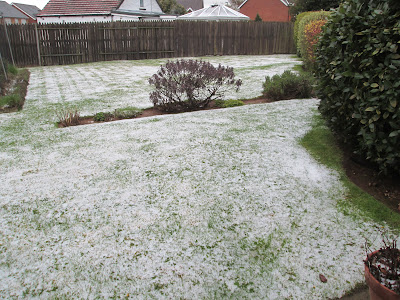Here is the hail lying as thick as snow on our lawn
yesterday.
Meanwhile, I’m thinking about who to ask to give feedback on
my ministry to the Bishop who will be conducting my Ministerial Development
Review (MDR) in November, the first of a new style of MDR the Bishops in this
diocese wants to adopt and the first which will include this feedback as
recommended by the Archbishops’ Council six years ago.
Four people are to be approached each to fill in one side of
paper asking about my main strengths (for which they should supply examples), areas
I might need help developing (we all know that this is a kind way of saying my main
weaknesses) and anything else they might want to draw to my attention (which I
suppose could be anything from what everyone is saying to their personal pet
wish).
The Bishop’s administrators have chosen two of these from
among the people listed on the parish’s annual returns (it is one of the
churchwardens and one of my clergy colleagues this time).
The note I received yesterday telling me this fails to mention that the
Archbishops’ Council guidance says I should be given an opportunity to object
to these choices (presumably because such random choice might identify by
accident the one person who is opposing all a clergyperson is trying to do in a
particular parish), which I think is a pity in principle although I have no
objection to the particular names myself.
That leaves me to pick two others.
Do I fall into the trap of only asking two
people who always say nice thankful things to me and seem to think I’m just the
sort of Rector they want? Do I fall into
the trap of generously asking at least one person who has objected to my
approach to something small or even a lot of things which are fundamental?
And will each of the four people be tempted to pull their punches
since they know I’ll be given a copy of what they write?
















